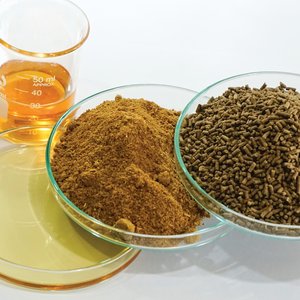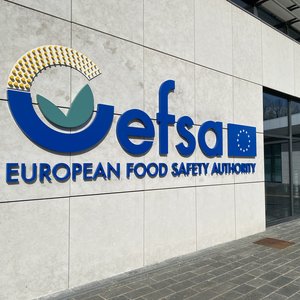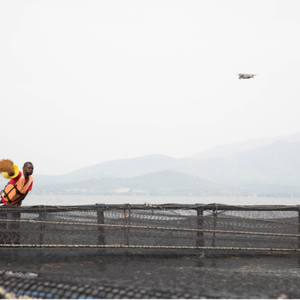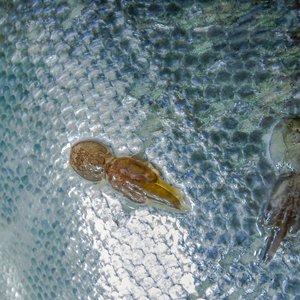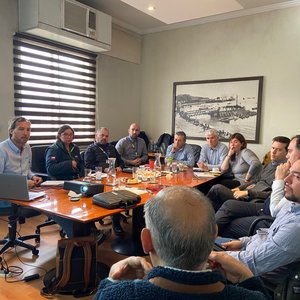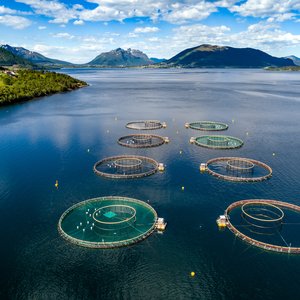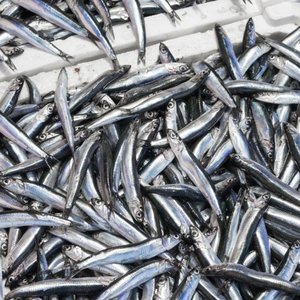Using vegetable raw materials in addition to fish meal and fish oil in salmon feed, it is now possible, with the best farming practices, to achieve a wild fish to salmon conversion ratio close to 1:1. Nutreco Aquaculture has now been occupied for some 20 years in research to identify and evaluate alternative raw materials, for example of vegetable origin, to supplement fishmeal and fish oil in fish feeds. The aim of this programme is to reduce dependence on the wild catch and to provide consumers with healthy fish products from sustainable fish farming.
The research was initiated as Nutreco Aquaculture was aware that modern aquaculture could not continue sustainable growth solely by increasing its consumption of fishmeal and fish oil, as both are finite resources.
As a result of this and related research, modern aquaculture can continue to grow without depleting world fish stocks.
The rate of supplementation of fishmeal and fish oil in fish feed is increasing, for example the proportion of vegetable oils used in the total fish feed production of Nutreco Aquaculture doubled from 2001 to 2002, from 5.5% to 11.4%. In salmon feeds a typical supplementation level is one-third but it can be as high as two-thirds of vegetable oil to one-third fish oil. As a result, the conversion of wild fish to farmed fish such as salmon is clearly favourable, as shown by Nutreco
Aquaculture Research Centre calculations. The success of this strategy means that Nutreco Aquaculture is now confident of continuing growth without depleting the wild fish stocks typically used for fishmeal and fish oil.
Purchasing policy
Fishmeal is a long-established raw material for livestock feeds and the market is production driven. This is demonstrated by the relatively constant world production figures over several decades, while price has fluctuated according to demand. With the advent of modern aquaculture fishmeal became an important component in the formulation of fish feed.
Although the consumption of fishmeal by aquaculture has increased, this has not resulted in a corresponding increase in the production of fishmeal.
Nutreco Aquaculture applies a purchasing policy that requires fishmeal and fish oil to be sourced only from managed and sustainable fisheries.
This is exemplified by the world's main supplier, Peru. In Peru the fishing of the bony, pelagic species that are used to produce fishmeal is strictly monitored and controlled by the government agency IMARPE, which maintains a clear overview of stocks and provides quotas on a species-by-species basis.
At the time of the origins of modern aquaculture fish oil was classed as a by-product of fishmeal production. It was described thus in the FAO technical paper T142 in 1986: "Fish oil, previously the main product from raw materials having high oil contents, is now of secondary value.
The product, however, is versatile and finds many applications in the food and technical industries and is still of considerable economic importance to producers."
Fish oil was often used as a fuel, for example in the fishmeal plants.
It still is used as a fuel in places. In line with fishmeal, the world production of fish oil has remained relatively constant since before the development of modern aquaculture. Table 14 of the FAO technical paper quotes world production as 1,041,000 tonnes in 1968 and 1,141,000 in 1980. Total world production in 2002 was 1,119,000 tonnes of which 300,000 tonnes came from Peru.
Nutreco Aquaculture believes it is to the credit of modern aquaculture that it has taken this secondary product and through the feed and farming activities is upgrading it to produce nutritious and healthy food.
Conversion ratios
The conversion ratio is calculated from fishery, to fishmeal, to feed, to salmonids, as fishmeal remains the primary production of the fisheries concerned.
It requires between 4 and 5 tonnes of fish to make 1 tonne of fishmeal.
A feed conversion ratio of 1.2 is a fair industry average (though many Nutreco Aquaculture farms are consistently achieving FCRs lower than this).
Based on a figure of 4.8 tonnes of fish for 1 tonne of fishmeal, an inclusion rate of 30% fishmeal in the fish feed and an FCR of 1.2, it requires 1.728 tonnes of wild fish to produce 1 tonne of salmon. (1t salmon requires 1.2t of feed, which uses 1.2 x 30% = 0.36t of fishmeal.
0.36t of fishmeal requires 0.36 x 4.8 = 1.728t of fish.)
The conversion ratio improves further when the yield of fish suitable for human consumption is considered. The yield of, for example, mackerel is around 30% (FAO figure) and of salmon is 65% or more ? 30% of 1.728t is 0.518t while 65% of 1t is 0.65t. This represents a net increase in edible yield of more than 25%. In fact the mackerel used is not generally considered suitable for human consumption.
It should be noted that these calculations do not take into account the possibilities of using the off-cuts and trimmings from the processing of other wild caught species nor the potential productive use of by-catch.
These ratios will continue to improve with the increasing use of
alternative sustainable resources, and parallel progress in fish husbandry, enabling modern aquaculture significantly to complement the sustainable yield of the seas.
Fish oil
Using the calculation recently published by WWF International, but taking account of the level of vegetable oil supplementation currently used in Nutreco Aquaculture companies, there is a significant reduction in the wild fish to salmon ratio.
At 100% fish oil the ratio is quoted as 4:1. When, as is now quite usual, 33% supplementation is used the ratio changes to 2.66:1. As mentioned, commercial feeds can be produced with 66% supplementation.
With such feeds, the ratio is 1.33:1.
If the FCR of 1.0 commonly achieved on Nutreco Aquaculture salmon farms is also used, the ratio of wild fish to salmon will be 1.1:1.
Advertisement


